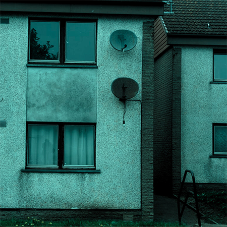EDIT 13/02/2018
The BBC have today released an article titled 'Don't use showgirls to sell roof tiles' - you can read it HERE - that discusses how in October last year, UK Construction Week, held at Birmingham's NEC, faced criticism over the use of lightly clad women to staff an exhibitor's stall. Once we became savvy to the matter, we wrote an article to discuss the matter of women in construction at large. You can read that article below
- - -
Attracting women into the construction industry has always been, at best, difficult. Construction has historically been a male-dominated industry, and even though steps are being taken towards a more diverse sector, the pace is very slow.
“While the construction sector has come a long way since those early days, the playing field is still not level,” said Michelle Gordon, managing editor of Excel Media Solutions and editor of Housing magazine at this years’ Women in Construction awards event. Could it be this lack of ‘level playing field’ is what is deterring women from being attracted en masse to the construction industry?
According to a study by the Royal Institute for Chartered Surveyors (RICS), around 40 percent of male workers said they thought men were better suited to construction. So is it any wonder the same study found that almost a third of women working in construction feared sexism will hold them back from the industry’s top jobs?
And when situations, like the Las Vegas style exhibition stand using promotional staff of scantly clad women as their marketing material, in an industry event that boasts to champion diversity, still arise, can we blame them?
A government report on employment just last year makes for equal grim reading. It states that in April-June 2016 there were so few female workers in the industry that for many of the individual building trades that the government was unable to even provide an estimate as to how many there were. Even still, despite the lack of available data, the ONS estimated that from boardroom to building site, women account for around 12.8 per cent of the industry’s workforce.
While the small percentage of women working in construction might reflect poorly on the industry as a whole, it becomes even more concerning when considered in the context of the need to recruit hundreds of thousands of new workers in the next five years. So with research like that by Keepmoat, which revealed only 13 per cent of 1,000 women it surveyed aged 16-25 would consider a career in the industry, it can spell nothing but bad news for the sector.
So with this huge gender disparity in construction at a time when the industry is crying out for new recruits, what is being done to attract a more gender-balanced workforce?
Not a lot, it could be argued. According to research by Redrow, only 29 per cent of women in a survey of 1,000 people aged 15-21 had been given advice on a career in construction, compared with 40 per cent of men. At the same time, the ONS reported the gender pay gap between men and women in construction stands at 45.4 per cent, with women paid an average hourly rate of £8.04, compared with £14.74 for men. And then there is the issue that some of their colleagues consider women unsuitable for their jobs based on their gender.
So is it a done deal? Are diversity and equality utterly unattainable in the construction industry?
Not quite. Although still in the minority, the number of women employed in construction appears to be on the rise. In 2015, the industry saw a 20-year high in the number of women it employed, with the number entering construction growing 6.6 per cent year on year according to ONS data. The numbers might be small, but they’re on the up.
And the research from RICS revealed optimism that the industry’s gender pay cap could soon be lower than the national average. Nearly half of the 1,000 people surveyed thought the gap in salaries would be below 15% by 2018.
Attitudes are also changing. Just by an example the annual Women in Construction Awards are now in their 11th year and were originally launched to champion the pioneering women making their way in what was very much considered to be a "man’s world".
And we mustn’t forget women like Christine Allen from R&W Civil Engineering; winner of the Business Leader of the Year award, Kelly Taylor, who runs K J Taylor Consulting and Brenda Jones, who is the technical director in project management services at WSP and Women in Property’s national chairman. They have taken the industry by storm and can inspire women considering to take up the trade.
The industry is moving forward, but it can do more. And it should do more! As long as government research on the number of women in construction and building trades are “too small for a reliable estimate”, the industry will need to fight to address the gender imbalance on site and in offices across the UK.
Related Blog Articles



crop192.png)












